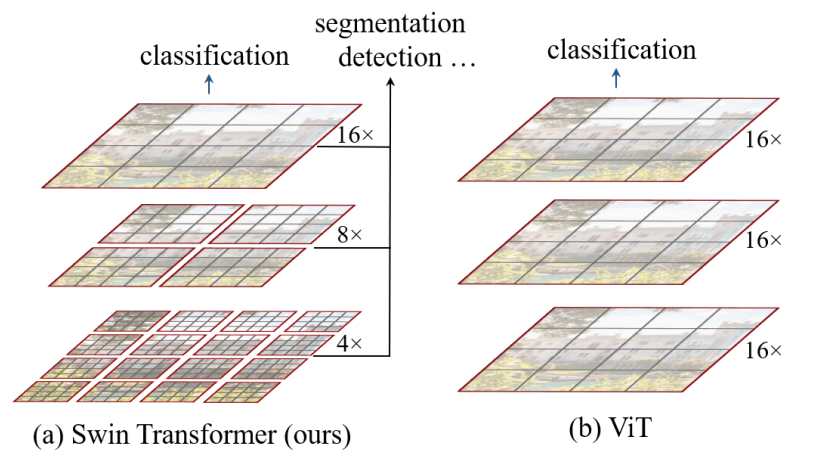swinv2 tiny patch4 window16 256
microsoftIntroduction
The Swin Transformer v2 is a vision transformer model pre-trained on ImageNet-1k, introduced in the paper "Swin Transformer V2: Scaling Up Capacity and Resolution" by Liu et al. This model is designed for image classification tasks and can serve as a general-purpose backbone for dense recognition tasks. It is especially notable for its hierarchical feature map construction and efficient computation complexity.
Architecture
Swin Transformer v2 builds hierarchical feature maps by merging image patches deeper within its layers and performs self-attention computations within local windows. This approach maintains linear computation complexity relative to input image size, contrasting with the quadratic complexity of traditional vision transformers. Key improvements in Swin Transformer v2 include:
- Residual-post-norm combined with cosine attention for better training stability.
- Log-spaced continuous position bias for effective transfer of models pre-trained on low-resolution images to high-resolution downstream tasks.
- SimMIM, a self-supervised pre-training method, reducing the need for vast labeled datasets.

Training
The Swin Transformer v2 employs a self-supervised pre-training approach called SimMIM, which minimizes the necessity for extensive labeled image datasets. This method enhances the model's ability to generalize to various tasks and resolutions.
Guide: Running Locally
To use the Swin Transformer v2 model for image classification, follow these steps:
- Install the required libraries: Ensure you have the
transformers,PIL, andrequestslibraries installed. - Load an image: Use Python's PIL library to open an image.
- Load the model and processor:
from transformers import AutoImageProcessor, AutoModelForImageClassification processor = AutoImageProcessor.from_pretrained("microsoft/swinv2-tiny-patch4-window16-256") model = AutoModelForImageClassification.from_pretrained("microsoft/swinv2-tiny-patch4-window16-256") - Prepare inputs and get predictions:
inputs = processor(images=image, return_tensors="pt") outputs = model(**inputs) logits = outputs.logits predicted_class_idx = logits.argmax(-1).item() print("Predicted class:", model.config.id2label[predicted_class_idx])
For optimal performance, consider using cloud GPU services such as AWS, Google Cloud, or Azure, which provide powerful GPU instances to accelerate model inference.
License
This model is licensed under the Apache License 2.0. For more details, refer to the official documentation and model card.